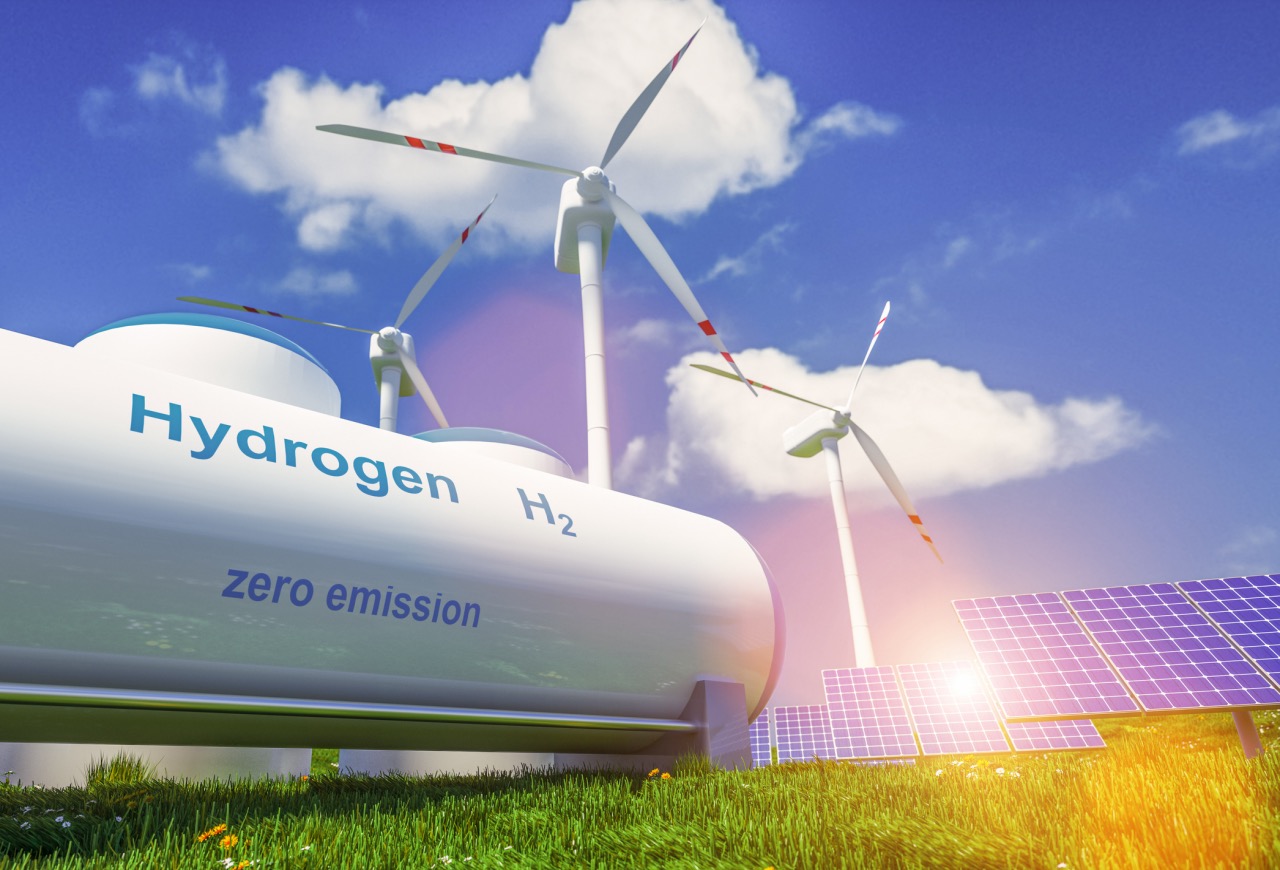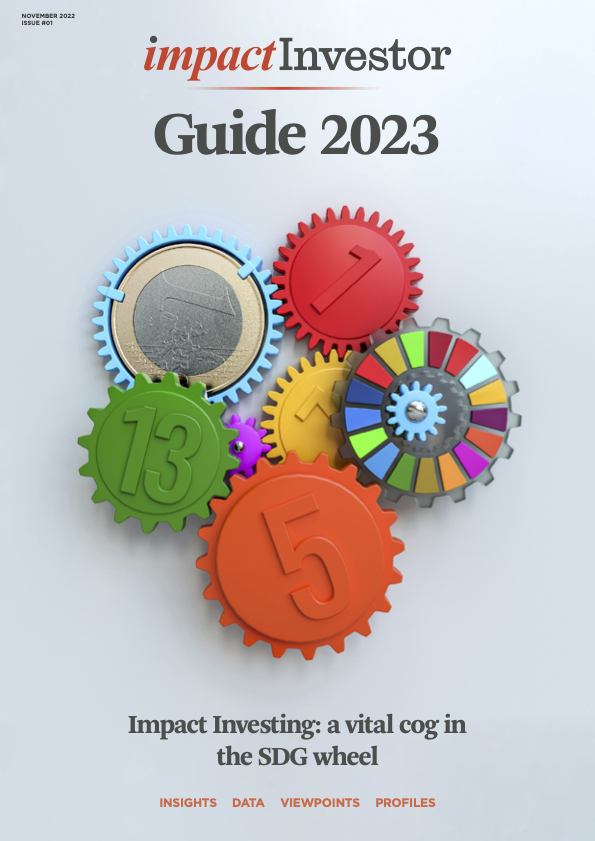Plans to develop the hydrogen economy have been accelerated by Russia’s invasion of Ukraine and by governments and investors coming together to finance and capitalise on the ‘clean’ hydrogen revolution.

In 1865, when Jules Verne wrote about hydrogen being used as a fuel in The Mysterious Island it was only half fiction. Just 13 years earlier, Henri Giffard had flown the first steam-powered hydrogen-filled blimp. Today, we have buses, trains and prototypes for planes all charged up to run on the most abundant element in the universe.
Plans to develop the hydrogen economy, a critical pillar to global decarbonisation and the fourth great energy transition, have been accelerated by Russia’s invasion of Ukraine, the US Inflation Reduction Act and the European Commission’s REPowerEU.
As a further boost, the EU also recently announced creation of a new European Hydrogen Bank that will be able to invest €3bn to build a market for hydrogen with Commission President Ursula von der Leyen, stating: “We need to move our hydrogen economy from niche to scale.”
According to Goldman Sachs, decarbonisation and reaching net-zero carbon emissions will require $5trn of cumulative investments, which for hydrogen generation alone could mean a total available market of $1trn by 2050.
“With the growing concerns around energy security, it is clear our economies need hydrogen. But on-the-ground deployment is not moving fast enough and needs to accelerate to realize the benefits of hydrogen,” says Yoshinori Kanehana, chairman of Kawasaki Heavy Industries and co-chair of the Hydrogen Council.
For these reasons, investors and governments are coming together to finance and capitalise on what has been dubbed the ‘clean’ hydrogen revolution; more than 30 countries have already released official hydrogen strategies and roadmaps outlining consumption trends and infrastructure plans.
Investment opportunity
The recent Hydrogen Council/McKinsey Hydrogen Insights stated that 680 large-scale projects had been announced reflecting investments of $240bn until 2030, an increase of 50% since November 2021. The report points out that investment proposals need to triple to $700bn until 2030 to achieve the 2050 net-zero target.
As an investment, hydrogen can be allocated across the portfolio, from private equity/venture capital investments in fuel cell technology, for example, through to infrastructure plays in storage hubs or refuelling stations. The fuel cell market alone is projected to grow from $3.36bn in 2021 to $28.95bn in 2028, at a compound annual growth rate (CAGR) of 36% over the period.
Phenix Capital’s Impact Database currently tracks seven funds that target the theme of hydrogen. “Hydrogen is an exciting opportunity for the transition to a greener economy. We will need much more investments in the technology as well as the infrastructure to harness its potential,” says Dirk Meuleman, CEO of Phenix Capital.
Hy24, a joint venture between FiveT Hydrogen and Ardian, has announced the closing of the Clean H2 Infra Fund focused on scaling proven hydrogen technologies for mature infrastructure assets.

“With €2bn of commitments, this fund will spur on the deployment of up to €20bn in assets of strategic value to the industry in the next six years, performing for our investors and helping to decarbonise the global economy,” says Pierre-Etienne Franc, co-founder and CEO of Hy24.
Anchor investors include Air Liquide, VINCI Concessions, TotalEnergies, Plug Power, Chart Industries and Baker Hughes, but the venture has also attracted 50 investors from 13 countries including AXA, Crédit Agricole Assurances, Allianz, CDPQ, Ballard, Schaeffler, Groupe ADP, EDF, Caisse des dépôts, DBJ and Itochu.
Annualised over five years, the S&P Kensho Hydrogen Economy Index was up nearly 10%, at the time of writing. Investors looking for liquidity can access the hydrogen economy via exchanged traded funds. Legal & General, for example, launched the first pure hydrogen economy ETF in Europe in February 2021.
As fossil fuel alternative, clean hydrogen can tick several UN Sustainable Development Goals (SDGs): clean and affordable energy (SDG 7); industry, innovation and infrastructure (SDG 9) and climate action (SDG 13). And as a feedstock for fertiliser, it can impact SDG 2, zero hunger, too.
Grey, blue and green
But to qualify as an impact investment it is important to understand how hydrogen is produced as not all forms of the gas can be considered ‘clean’. The demand for hydrogen has grown more than threefold since 1975, but according to the International Energy Agency’s 2019 report The Future of Hydrogen almost all of it is entirely supplied from fossil fuels via steam-methane reforming of natural gas.
At €1.5/kg of H2, this so called ‘grey’ hydrogen is the cheapest form available but producing it emits 9.3 kg of CO2 per kilo of hydrogen, not qualifying as clean energy. When the CO2 is removed using carbon capture technologies, ‘blue’ hydrogen is created but this process both increases the price of hydrogen and its carbon footprint.
Green or ‘clean’ hydrogen is produced by the electrolysis of water using renewable energy. This keeps the carbon footprint lower but currently costs between €2.5/kg and €5.5/kg.
As clean hydrogen has the potential to aid in the decarbonisation of an estimated 15% of global greenhouse gas (GHG) emissions, many government policies are designed to bring down the cost of green hydrogen production, which in turn is driving investment in this direction.
A number of investors including Ontario Teachers’ Pension Plan Board, Alberta Investment Management Corporation and Manulife Financial Corporation have collectively invested $650m in equity commitments in the Haddington Ventures’ fund. This has been set up to provide construction equity for projects developed by the Advanced Clean Energy Storage Joint Venture (ACES Delta LLC), which will be the largest green hydrogen platform in the world.

“Ontario Teachers’ is committed to decarbonisation and the energy transition and we believe green hydrogen production and storage will play an essential role in this transition,” says Chris Ireland, managing director, greenfield and renewables at Ontario Teachers’.
To this end, ammonia is deemed as the best solution for storing and distributing hydrogen and not only is green ammonia seen as a zero-carbon fuel but some 80% of the ammonia produced is being used as feedstock for fertiliser.
Moreover, according to IEA’s Net Zero Emissions Scenario for 2050, ammonia will account for around 45% of global energy demand for shipping, which is said to produce some 3% of GHG emissions, making the need for abundant clean supplies even more imperative.
Together with the Carlyle Group, Singapore’s sovereign wealth fund GIC, which is also part of the ACES Delta green hydrogen consortium, is backing Eneus Energy that is developing a 14GW+ green ammonia pipeline.
“The investment in Eneus reflects GIC’s continued deep commitment to renewable energy innovation and global decarbonisation efforts. This is a strategic investment to position GIC early for the green hydrogen market which we believe will play a crucial role in the transition to clean energy,” says Ang Eng Seng, CIO of infrastructure at GIC.
White hydrogen
The ‘hydrogen rush’ has clearly started and all eyes are on producing green hydrogen as cheaply as possible, but Beam Earth, a pioneer in clean oil extraction, is exploring the production of a naturally occurring and renewable form of hydrogen known as geological, or white, hydrogen.
“White hydrogen can be produced at a much lower cost of $0.5 to $1 per kilo of hydrogen,” explains Michael Hart, board member at Beam Earth, adding that to give institutional investors access the firm has structured a dedicated investment vehicle.
“If renewable white hydrogen only has a 20% market share of the decarbonised hydrogen market by 2030, this would already be a $75 billion industry,” says Pierre Levin, chief technology officer at Beam Earth. White or green, clean and renewable forms of hydrogen are the key to the path to net zero.”

This article is part of the editorial content of the Impact Investor Guide 2023. You can download a digital copy of the guide here.






